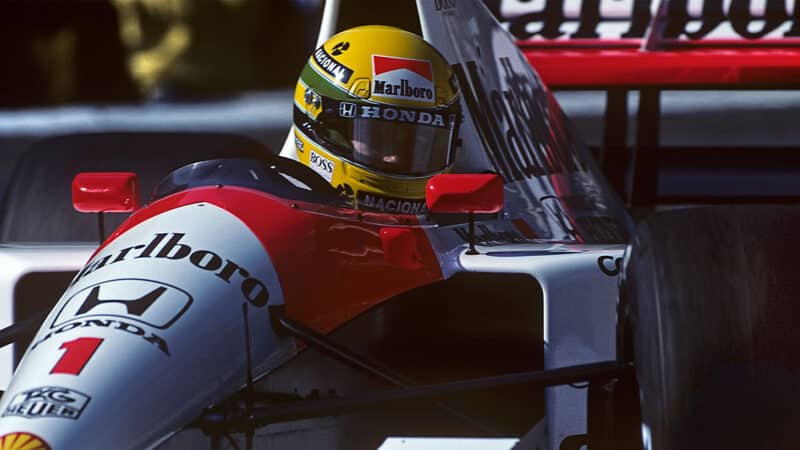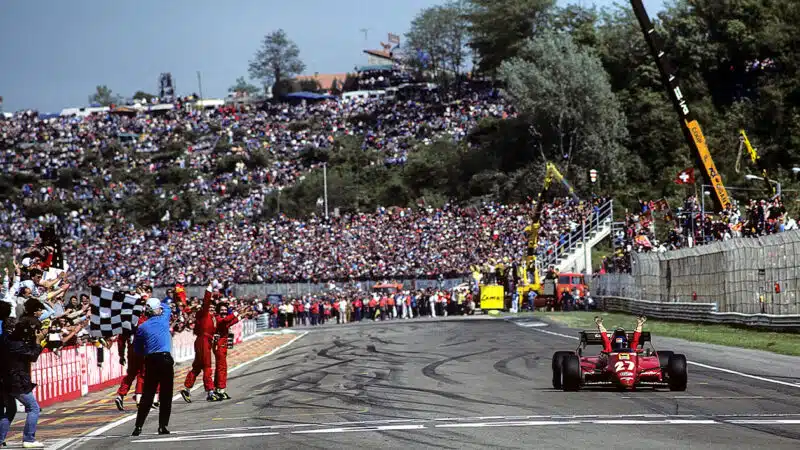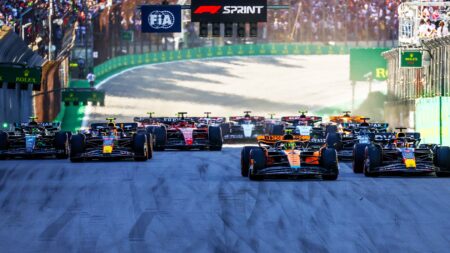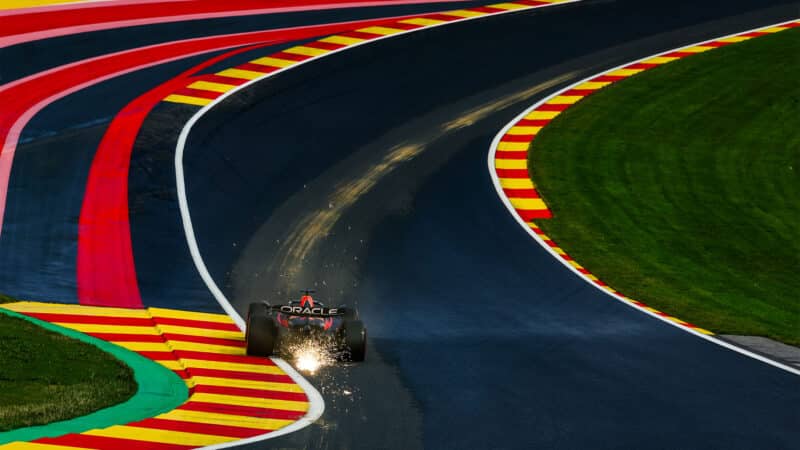“You look at where the sun is, where the light is going to be in the next hour – or sometimes even the next few minutes – and try to plan in advance to be at a certain place at a certain time.”
Gooden concurs, and explains how it influenced a shot he took which Cahier picked out as one of the F1 images of the year, capturing Charles Leclerc’s Ferrari lit up by the desert sunset in Bahrain.
“Test sessions are great because you have three days where are you are almost certain to have to have some nice light at the end of the day,” he says.
“But because we just go to the same track every year at Sakhir, this year I decided to just walk around the track and see what new place I could find.
“I was quite lucky when I stopped at this spot just on the straight. I was looking for sparks, but then I realised the sun was actually really low.
“It was bouncing off the bodywork, perfectly illustrating the shape of an F1 car – and it was ‘doing’ some sparks too! So I was really happy to find a new, different shot like this.”

Sun hits Leclerc’s Ferrari at perfect moment
Charles Leclerc in Bahrain Florent Gooden, DPPI
Location is of course crucial in both capturing the right light – there’s no substitute for putting in the legwork – but so is finding the space for framing the optimum on-track action.
“I’ve learned from when I used to be shooting from the grandstands, or behind the fences, you need to try not to have any disturbing elements in the background or foreground,” says Gooden.
“You want to have a clean image – like the one I shot of Verstappen going through Eau Rouge / Radillon.






